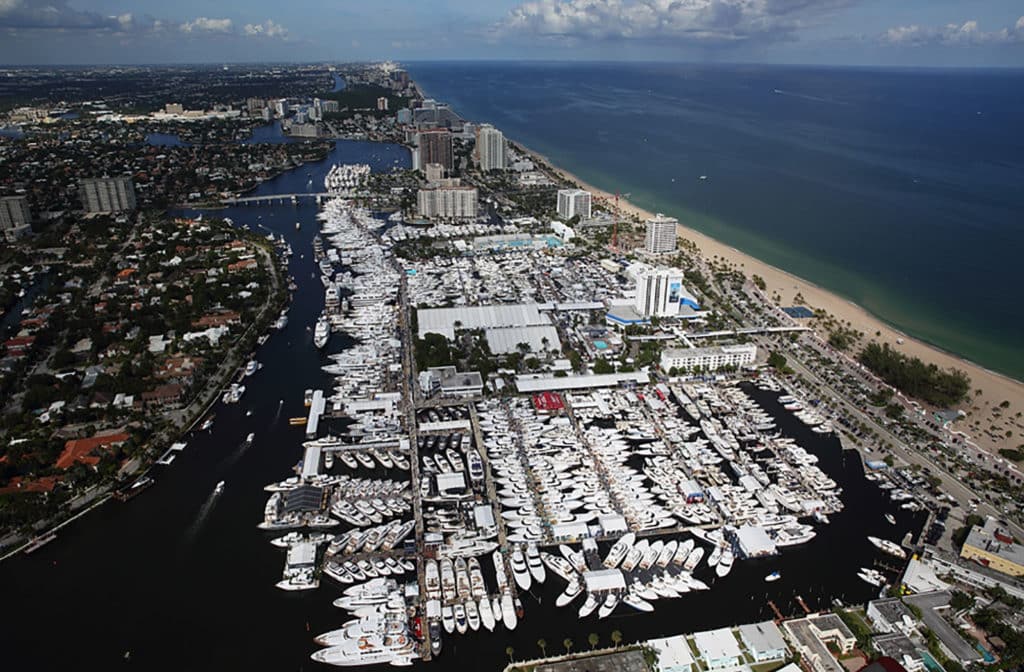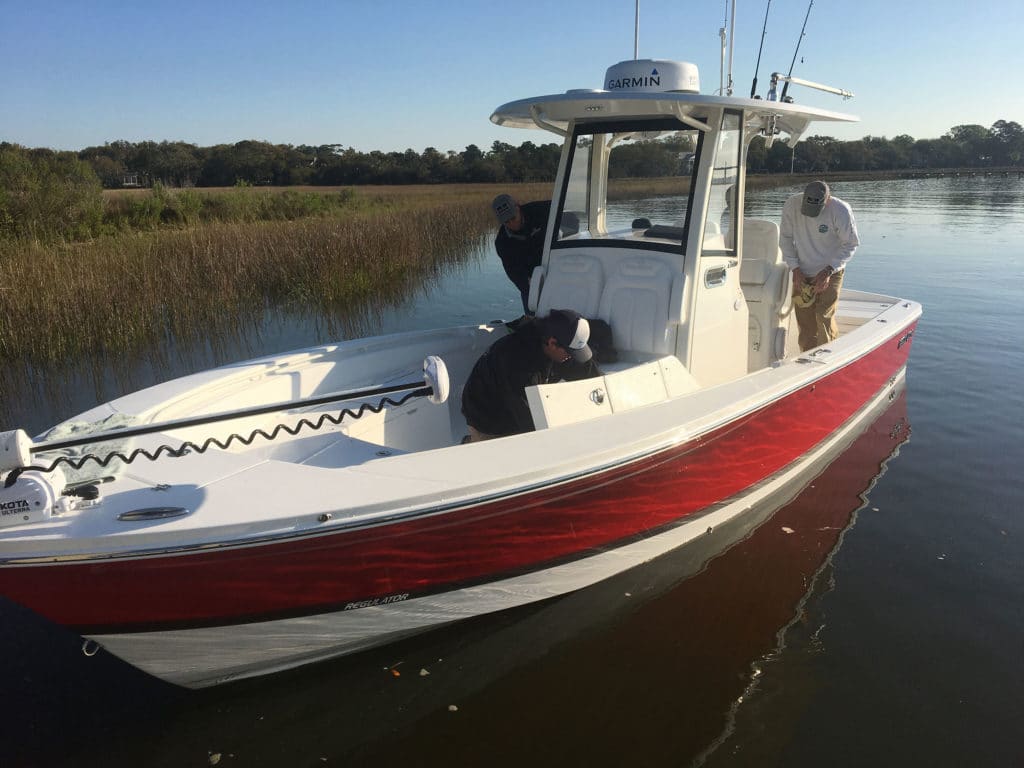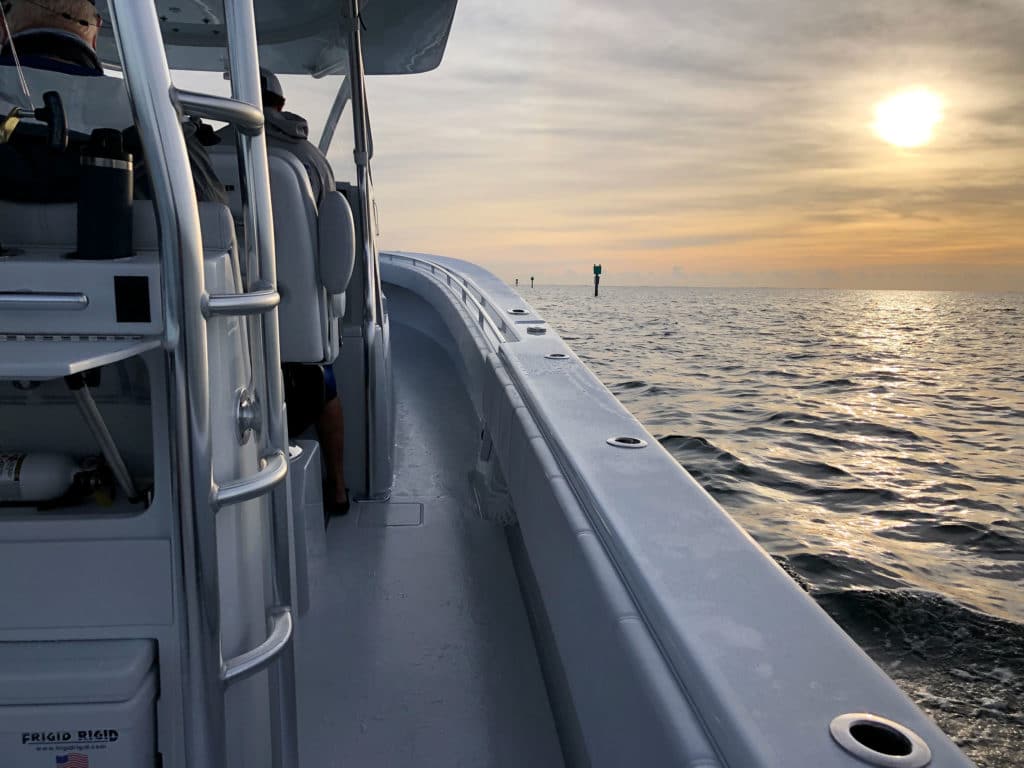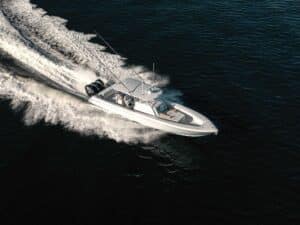
With boat-show season just around the corner, you’ll see lots of new saltwater fishing boats—eye candy to tempt avid anglers. But before you decide to buy that shiny new fishing boat, make sure you take time for a thorough sea-trial. That’s the only way to gauge how well the boat handles seas and fishes in real life conditions.
Any boat dealer or factory representative should be more than happy to host an on-water demo for a serious boat buyer. Rather than relying on a brief run outside the inlet during the busy boat show itself, schedule a day sometime after the show when you can put the boat through its paces and spend a few hours onboard.
Read Next: Make It Yours
At the dock, be sure to go over all of the boat’s systems including livewell setups. Create a checklist of the features and comforts you want, and make sure to tick them off as you walk through.

After you’ve left the dock, ask the dealer to let you take the wheel. This will give you the best possible feel for the boat. Here are 10 key factors to look for while sea-trialing a boat that you’re considering for purchase:
Helm Visibility & Comfort
Determine if you can see well from behind the wheel at all times — at idle, underway or during acceleration out of the hole. A boat that rides bow-high or has a dash that sits too high for good visibility creates a safety issue. It also impairs your ability to see signs of fish ahead of the boat. If you can’t see well from the helm, move on to another boat. You should also feel comfortable at the helm, whether standing, seated or using a leaning post,
Strong Acceleration
Make sure the boat climbs onto plane without struggling, when you punch the throttles. If not, it might be a sign of insufficient power, poor choice of propellers or improper setup (such as having the outboards set at the wrong height on the transom). In any case, ask the boat representative to correct the flaw, and then schedule a new sea trial.
Minimum Planing Speed
It’s important to know how slow a boat can go while also staying on plane. This can make a big difference when you encounter rough seas and need to slow down to maintain a comfortable ride, but want to stay on plane for greater fuel economy. Try adjusting the engine trim angle downward and deploying the trim tabs or interceptors to determine the minimum planing speed. Look to achieve a speed of between 15 and 20 mph. If the boat will not plane at such speeds, you might want to start looking at other boats.

Fuel Efficiency
Try running the boat at various rpm to find where it achieves its best mpg. This is often indicated on the engine’s digital instrumentation. For an outboard-powered boat, the best mpg is usually achieved at around 3,500 to 4,000 rpm. This will give you an idea of fuel costs going forward and, just as importantly, your fishing range, based on the boat’s fuel capacity.
Smooth Ride & Seakeeping
The ride comfort and seakeeping ability of the boat become critical in rough seas. You want a boat that slices as smoothly as possible through choppy water, waves and swells without taking excessive water over the bow or delivering a jarring ride. If the boat pounds hard or the nose tends to plunge through waves, try adjusting the speed, engine trim and tabs or interceptors to create a more comfortable ride. Sometimes you can correct for these issues with judicial helmsmanship. But if not, start looking at other boats.
Stability
Check to see if the hull rolls uncomfortably at rest or while underway. Put the boat abeam of the seas and pull back to trolling speed. How does the side-to-side motion feel? You will feel some rolling motion, to be sure, but it should not be highly exaggerated. If the roll feels acceptable, you have a stable platform for fishing. If not, you might want to look at another boat or consider installing a Seakeeper gyro-stabilizer to eliminate the roll.
Handling
Few of the newer saltwater fishing boats handle poorly these days, but if you’re considering an older boat, particularly one of the early stepped-hull designs, make sure it corners safely at speed. It should turn as if on rails with minimal sliding or catching of the chine edge in mid-turn. As indicated earlier, make sure the bow does not stuff into waves while underway. Also check low-speed handling to ensure you can dock with ease and that the boat is responsive in reverse.
Reserve Power
Make sure the boat has sufficient and quickly available reserve power. That is, while cruising in the mid-rpm range, you have extra throttle available to accelerate out of danger. This can be critical if you find yourself suddenly faced with a rogue wave advancing from abeam or a large following sea while returning through the inlet. With extra power, a quick punch of the throttle can put the danger astern, but without reserve oomph, you’re left at the mercy of the seas.
Top Speed
All-out speed is not always relevant to saltwater fishing, except in tournament situations when it’s crucial to quickly find a fishing spot or make it back to the scales in time. Still, knowing the top speed can be helpful, particularly if you find yourself needing to outrun an approaching thunderstorm while fishing offshore.
Keeping Dry
As you’re running the boat, note whether or not spray is an issue and, if so, in which sea conditions. Just about any boat will take spray on the windward beam in gusty conditions, but most will stay fairly dry when running down- or up-wind. If the boat takes a lot of spray while running into or with the breeze, that’s an issue. If everything stays dry, you’re sea-trialing a well- designed boat—one that you just might want to buy.








